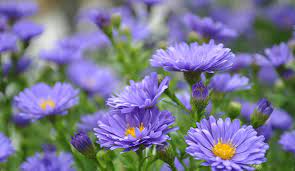**Chrysanthemums in Landscape Architecture: Enhancing Outdoor Spaces**

Chrysanthemums, known for their stunning blooms and versatile nature, hold a special place in landscape architecture. These vibrant flowers are not only celebrated for their aesthetic appeal but also valued for their functional and symbolic significance in outdoor design. From formal gardens to urban landscapes, chrysanthemums play a pivotal role in shaping and enhancing outdoor spaces. Let’s explore the intricate relationship between chrysanthemums and landscape architecture, highlighting their impact on garden aesthetics, functionality, and cultural symbolism.
**1. Aesthetic Beauty and Seasonal Color**
Chrysanthemums are prized for their aesthetic beauty and seasonal color display, making them popular choices for landscape architects and garden designers. The diverse range of chrysanthemum cultivars, with their varying flower shapes, sizes, and colors, offers endless creative possibilities for garden compositions. From cascading mounds of pompon chrysanthemums to formal beds of single-flowered varieties, chrysanthemums add visual interest and dynamic color accents to outdoor landscapes throughout the growing season.
**2. Versatility in Garden Design**
Chrysanthemums are incredibly versatile plants that can be used in various garden design styles and settings. In formal gardens, chrysanthemums are often employed as focal points or bedding plants, creating structured displays of color and texture. In cottage gardens, chrysanthemums mingle with other perennials and annuals, contributing to a relaxed and naturalistic atmosphere. Their adaptability allows them to thrive in flower borders, containers, rock gardens, and even rooftop gardens, making them essential components of diverse landscape compositions.
**3. Seasonal Transitions and Visual Impact**
Chrysanthemums play a vital role in seasonal transitions within landscape architecture. As autumn approaches, chrysanthemums burst into bloom, signaling the change of seasons and infusing landscapes with vibrant fall colors. Their robust growth and prolific flowering make chrysanthemums key players in extending the visual interest of outdoor spaces well into late autumn. Landscape architects strategically incorporate chrysanthemums to create striking autumnal displays that captivate and inspire visitors.
**4. Cultural Symbolism and Horticultural Heritage**
Chrysanthemums hold significant cultural symbolism in many societies and are deeply rooted in horticultural heritage. In Asian cultures, particularly in China and Japan, chrysanthemums symbolize longevity, joy, and rejuvenation. The chrysanthemum is revered as the “flower of the ninth moon” in Chinese culture and is celebrated during the Chrysanthemum Festival (Double Ninth Festival). In Japan, chrysanthemums are associated with the Imperial Family and are used as a symbol of the nation. Landscape architects often incorporate chrysanthemums into garden designs to evoke cultural meanings and celebrate horticultural traditions.
**5. Functional Benefits in Urban Landscapes**
Chrysanthemums offer functional benefits in urban landscapes and public spaces. As low-maintenance plants, chrysanthemums are well-suited for urban gardening and green infrastructure projects. They thrive in diverse environmental conditions and contribute to urban biodiversity by attracting pollinators and supporting wildlife. Chrysanthemums also play a role in mitigating urban heat island effects by providing shade and cooling outdoor environments.
**6. Design Principles and Planting Techniques**
Landscape architects employ design principles and planting techniques to maximize the impact of chrysanthemums in outdoor settings. Mass plantings of chrysanthemums create bold swaths of color and texture, while strategic placement of different cultivars adds depth and dimension to garden beds. Layering chrysanthemums with other plants, such as ornamental grasses or flowering shrubs, enhances seasonal interest and extends the longevity of garden displays.
**7. Community Engagement and Public Gardens**
Chrysanthemums foster community engagement and appreciation for public gardens. Botanical gardens, arboretums, and municipal parks often showcase chrysanthemum displays that attract visitors and educate the public about plant diversity and landscape design. By incorporating chrysanthemums into public gardens, landscape architects create inviting spaces that promote environmental awareness and cultural appreciation.
**Conclusion**
Chrysanthemums are integral components of landscape architecture, enriching outdoor spaces with their beauty, symbolism, and functional benefits. Whether used in formal gardens, urban landscapes, or public parks, chrysanthemums enhance garden aesthetics, support biodiversity, and celebrate cultural traditions. Landscape architects leverage the versatility of chrysanthemums to create dynamic and sustainable landscapes that inspire and delight visitors throughout the seasons. By embracing the unique qualities of chrysanthemums, landscape architects continue to innovate and shape outdoor environments that harmonize with nature and enrich the human experience.
**Chrysanthemums in Landscape Architecture: Integrating Beauty and Functionality**
Chrysanthemums, revered for their ornamental value and cultural significance, play a pivotal role in landscape architecture by blending beauty with functionality. These versatile flowering plants are esteemed for their ability to enhance outdoor spaces while contributing to ecological balance and sustainable design practices. From creating dynamic garden compositions to supporting pollinators and improving urban aesthetics, chrysanthemums are indispensable elements in landscape architecture. Let’s delve deeper into how chrysanthemums are integrated into landscape design, highlighting their diverse applications and transformative impact on outdoor environments.
**1. Seasonal Interest and Garden Dynamics**
Chrysanthemums are prized for their seasonal interest and dynamic contribution to garden dynamics. In landscape architecture, chrysanthemums are strategically planted to provide visual impact during specific seasons, particularly in autumn. The vibrant colors and abundant blooms of chrysanthemums create focal points and add layers of texture to garden compositions. Landscape architects utilize chrysanthemums to extend the visual appeal of outdoor spaces beyond the typical flowering period, ensuring year-round garden interest.
**2. Plant Selection and Design Integration**
Integrating chrysanthemums into landscape design involves careful plant selection and design integration. Landscape architects consider factors such as site conditions, climate, and aesthetic preferences when choosing chrysanthemum cultivars for garden installations. By selecting a diverse range of chrysanthemum varieties with varying heights, colors, and bloom times, landscape architects create harmonious garden palettes that evolve throughout the seasons. Design integration techniques, such as mass plantings, mixed borders, and container arrangements, showcase the versatility of chrysanthemums in different garden settings.
**3. Pollinator Support and Ecological Benefits**
Chrysanthemums play a vital role in supporting pollinators and promoting ecological benefits in landscape architecture. The nectar-rich flowers attract bees, butterflies, and other beneficial insects, contributing to pollination and biodiversity. By incorporating chrysanthemums into garden designs, landscape architects foster habitat diversity and enhance ecosystem resilience. Chrysanthemums also serve as companion plants that deter pests and attract beneficial predators, reducing the need for chemical interventions in garden maintenance.
**4. Urban Greening and Streetscape Enhancement**
In urban landscapes, chrysanthemums contribute to urban greening efforts and streetscape enhancement. Landscape architects use chrysanthemums to soften hardscapes, such as sidewalks and building facades, with bursts of color and texture. Chrysanthemums in urban plantings improve air quality, mitigate heat island effects, and create inviting green spaces for residents and visitors. By incorporating chrysanthemums into urban design projects, landscape architects enhance the livability and sustainability of urban environments.
**5. Cultural Significance and Symbolism**
Chrysanthemums hold cultural significance and symbolic meanings in landscape architecture, particularly in Asian garden traditions. In Japanese garden design, chrysanthemums symbolize longevity, rejuvenation, and imperial elegance. Chrysanthemum motifs are incorporated into garden art, architecture, and seasonal displays, reflecting cultural heritage and aesthetic values. Landscape architects draw inspiration from chrysanthemum symbolism to create evocative garden experiences that resonate with historical and cultural narratives.
**6. Sustainable Practices and Low-Maintenance Landscapes**
Chrysanthemums exemplify sustainable gardening practices and contribute to low-maintenance landscapes. As hardy perennials, chrysanthemums require minimal water and maintenance once established, making them ideal for sustainable landscape designs. Landscape architects prioritize water-wise gardening techniques and native plant selections, incorporating chrysanthemums as resilient components of eco-friendly landscapes. By promoting sustainable practices, chrysanthemums contribute to resource conservation and environmental stewardship in landscape architecture.
**7. Public Engagement and Community Gardens**
Chrysanthemums foster public engagement and community participation in landscape architecture through public gardens and community green spaces. Botanical gardens and arboretums showcase chrysanthemum collections that educate and inspire visitors about plant diversity and horticultural techniques. Community gardens often feature chrysanthemums as accessible plants for novice gardeners and urban residents, fostering connections between people and nature.
**Conclusion**
Chrysanthemums are integral to landscape architecture, embodying a harmonious blend of beauty, functionality, and ecological significance. Landscape architects leverage the aesthetic appeal and ecological benefits of chrysanthemums to create dynamic outdoor environments that engage, inspire, and sustain communities. By integrating chrysanthemums into landscape designs, architects transform outdoor spaces into living works of art that celebrate nature’s diversity and cultural heritage. Chrysanthemums continue to enrich landscape architecture with their timeless elegance and enduring contributions to sustainable garden aesthetics.

